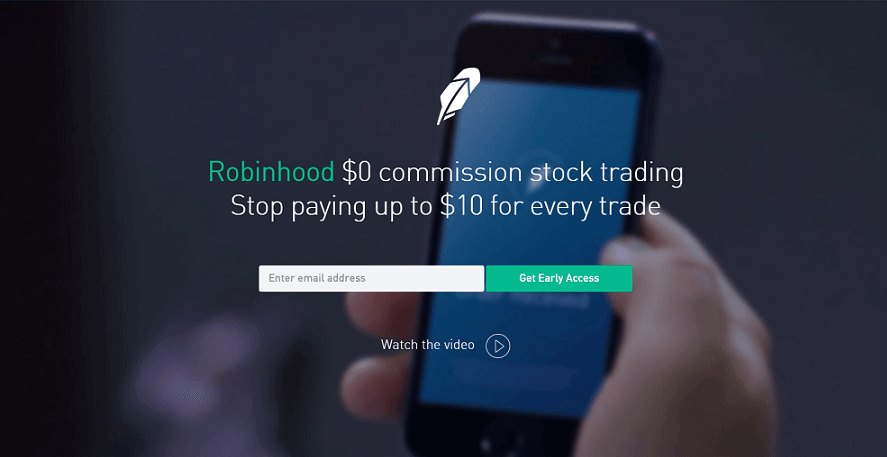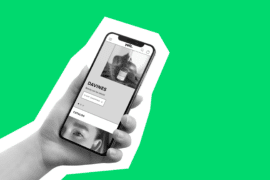Every global corporation starts their business with a small version of their product. Even popular food delivery chains began as mini-cafés with just one courier.
In 2013, Rubyroid Labs started with just two passionate developers who aimed to develop digital products to help entrepreneurs improve the world. Over the past 10 years, our startup has grown into a company of more than 60 engineers who have successfully developed more than 200 ideas into mature products with the potential to scale.
If you have an idea but are unsure of its feasibility, feel free to reach out to us. We will work with you to shape your concept into a fruitful project with the help of an MVP.
Food deliveries, social media platforms, booking systems, and other digital solutions would never have started their businesses if they weren’t confident in the success of their products. To validate their business models, they built a Minimum Viable Product (MVP) to test the demand for key product features among their target audience and assess how the app solves users’ problems.
An MVP is a great opportunity to test a product without making huge investments, minimize the risk of startup failure, and even attract investors for the full version of the app.
In this article, you’ll discover how eight world-famous corporations raised their products after developing an MVP, even with a low budget.
Contents:
- Types of Minimum Viable Product (MVP)
- 8 Examples of Minimum Viable Product
- How to Transform Your Business Idea into a Successful MVP
- Inspired by The Best MVP Examples?
Types of Minimum Viable Product (MVP)
MVP is one of the most essential techniques to keep startups from failing and reduce overall product development costs.
A Minimum Viable Product (MVP) is a version of a new product that has a minimum set of features to find out the interest of the target audience and gather valuable feedback for further development.
Unlike a minimum marketable product, which stands for a full product itself, the key idea of minimum viable product development is delivering the core functionality in a short time with minimum effort and resources spent on building unnecessary features. By releasing an MVP, businesses can validate their assumptions, test market demand, and iterate based on user feedback.
Now, let’s take a look at the types of MVP products that are most frequently developed.
Piecemeal MVP
The piecemeal minimum viable product involves creating MVP software by combining existing tools, technologies, or services to deliver a solution. Instead of building everything from scratch, businesses leverage third-party solutions and integrate them to provide value to their users.
This approach allows companies to test their product ideas without investing heavily in development.
For example, to test the potential of a subscription-based model for e-commerce platform products without building it from scratch, developers can integrate third-party subscription management services such as Stripe or Recurly.
It allows the programmers to save time and resources, validate customer interest in subscribing to the products, and gather valuable data without the need to develop a separate subscription system.
Landing Page MVP
A landing page MVP is a simple webpage that describes a product or service and collects user interest or sign-ups. This MVP strategy allows businesses to analyze market interest and validate demand before investing in full-scale development. By driving traffic to the landing page through various marketing channels, such as social media or search engine optimization, businesses can measure the conversion rate and gather user feedback.
Concierge MVP
The concierge minimum viable product (MVP) involves providing a service to customers with the assistance of real specialists. It serves as an imitation of a feature that would eventually be automated in the future. For instance, a personal finance app can begin by manually analyzing users’ financial data and offering personalized recommendations.
This approach enables businesses to identify the pain points that customers face while addressing the problem and develop an appropriate solution. The concierge MVP helps gather valuable insights and feedback from users, enabling businesses to refine and enhance their products based on real-world experiences.
Wizard of Oz MVP
The Wizard of Oz MVP approach creates the illusion of a fully functional product while manually performing the tasks behind the scenes. This approach allows businesses to test user interactions and gather feedback without investing heavily in development.
For example, a language learning app can simulate an AI-powered language tutor by having human tutors respond to user queries. By mimicking the product experience, businesses can validate the demand and iterate based on user feedback before building the actual AI-powered tutor.
Single-Feature MVP
A single-feature minimum viable product focuses on testing just one core feature of a product to validate its value proposition. This approach allows businesses to test the market demand for a specific feature without building the entire product. By collecting user feedback and measuring user engagement with the single feature, companies can make data-driven decisions about further development.
For example, a project management tool can release an MVP that focuses solely on task management to validate the demand for that specific feature before investing in other features like file sharing or collaboration.
8 Examples of Minimum Viable Product
Let’s explore eight examples of successful MVPs and see how they skyrocketed into popular apps.
Robinhood
The Robinhood app made a splash in the fintech scene when it was launched in 2015. By offering zero-commission trading and simple access to financial markets, it directly challenged Wall Street’s big investment players. They had no choice but to eventually reduce commissions and innovate their services to appeal to millennials.
To launch a service like that, you need to get approval from financial authorities. And they will want to see some capital on your company’s balance sheet.
On the one hand, it’s a disadvantage: you have to raise capital before you build a product you can test on the market. On the other hand, investors understand that you have to meet the regulators’ requirements before you can launch an MVP.
So, you have a situation where a great product idea, not yet proven, can be enough for you to close the seed round. And we know now that Robinhood was an idea great enough to appeal to investors.
After the regulators approved Robinhood, Tenev and Bhatt put together a one-page website with a launch waitlist. The site contained nothing but a sign-up button for collecting emails and one line of text: “Commission-free trading, stop paying up to $10 per trade.”

And that was enough. Around 10,000 people signed up on the first day. During the first week, the figure grew to 50,000 — just to hit a tad short of 1 million in the first year.
Problems it solved:
- Expensive trading due to broker commissions
- Long and complicated process of buying your first stock
Features built at the MVP phase:
- A website inviting users to join the launch waitlist
Important features introduced after MVP validation:
- The app itself
- Fractional share trading
- Crypto trading
- IPO share trading
While waiting for regulatory approval, Robinhood founders created a couple of experimental apps and tried them out with users. Through that process, they made some of the most common founder mistakes, like offering too many features and addressing the wrong customer problems. So, when it came time to build the website, Tenev and Bhatt knew where to strike.
Robinhood is one of the greatest examples of an MVP. Many startups have followed suit, creating a sign-up page with a brief description first.
Uber
Uber is the embodiment of every entrepreneur’s dream. It’s an innovative service that has expanded to more than 60 countries, provides jobs for over 22,000 people worldwide, and generates ten figures in revenue. Today, the term “uber” is synonymous with aggregation, and is used to easily convey new product ideas based on this feature.

This is what the UberCab website looked like in 2009
Garrett Camp and Travis Kalanick founded “UberCab” back in 2009. Their MVP idea was to create a simple mobile interface used by its founders and their circle of friends. The UberCab iPhone app was launched citywide in San Francisco in 2010.
Problems it solved:
- Difficulty finding a cab during peak travel times
- The high cost of car services
Features built at the MVP phase:
- An iOS app
- Connecting commuters with drivers
- Facilitating payments through a credit card system
Important features introduced in the actual product:
- Driver reviews
- Fare splitting
- Driver tracking live
- Payment automation
- Gamification elements
At its onset, UberCab enabled just two features that were enough to efficiently solve the problem. By the time the app went live, it already had several competitors like TaxiMagic and Cabulous (both now long gone). Who knows what fate Uber would have suffered if, instead of focusing on those two initial features, Kalanick and Camp had postponed the launch until every feature was built out?
Airbnb
Hotels hate Airbnb. This service provides a more affordable alternative to their potential customers. With more than $2 billion in revenue and over 12,700 employees globally, this 2008 startup stands on solid footing today.
It all began in 2007 with one of the funniest minimum viable product examples to date. The legend has it that co-founders Brian Chesky and Joe Gebbia lived in San Francisco and lacked the money for rent and bills. That year, the Industrial Design Society of America Conference took place in the city — and there was a problem.

AirBed&Breakfast website in 2007
Local hotels couldn’t accommodate everyone seeking to attend the conference. Chesky and Gebbia set out to solve the problem: they bought some air mattresses and put them in their home. The entrepreneurs photographed the settings and uploaded those photos to a simple website, AirBed&Breakfast, offering accommodation to the attendees.
Three people soon booked the place, which meant that the MVP helped to prove the concept viable.
Problems it solved:
- Expensive stay at hotels
- Not enough hotel rooms to host everyone
Features built at the MVP phase:
- A simple showcase website
- A photo gallery
- Product design
Important features introduced after MVP validation:
- Search
- Host and guest profiles
- Reviews
- Special offers
- Craigslist platform integration
- Smart pricing
…and many more.
A clean website with photos was enough to validate the idea. In addition, designers Chesky and Gebbia knew many people who wanted to be at the conference. They tapped into their network before advertising to the unaware – and created one of the most successful MVP cases many founders have tried to replicate since.
Day One Credit
The MVP model is not only applicable to starting a brand new company. You can also use it to build a product as part of a corporate software family.
In this case, you know your market very well, but you still cannot be sure that your customers will like the idea. Similarly to developing a startup, you might want to test the waters before you shell out tons of money on a dysfunctional tool.
That is how our client, the Californian car dealer Autocity, tackled its sales problem.
Autocity spotted a bottleneck in sales: some people couldn’t buy a car because they were going through bankruptcy and regular loans weren’t available to them. The company set out to fix that by building a car loan management system, Day One Credit.

The system would provide an easy financing service for bankrupt customers. They would apply at Day One Credit and, if they qualified, get a loan to buy a car from Autocity.
We began by setting up the basic version of the website. During the first month after launch, it helped the company sell 20 cars. This proved the concept right, and we moved on towards building further features.
Problems it solved:
- Many people going through bankruptcy can’t buy a car because traditional loans are not available to them
Features built at the MVP phase:
- A simple website
- An online application form
Important features introduced after MVP validation:
- Bankruptcy attorney profiles
- Advanced service options
- SMS and email notifications
- Blog
The example of Day One Credit MVP shows that a simple website with a feedback form can be enough to validate your idea.
Dropbox
Storing files in the cloud is synonymous with Dropbox. One of Y Combinator’s most successful investments ever, it boasts more than 500 million users globally and over $1.1 billion in annual revenue.
But how did it all begin?
Drew Houston, a student at the Massachusetts Institute of Technology (MIT) in the 2000s, often forgot to take his USB flash drive to class with him. He wanted to solve that problem by accessing his files remotely from anywhere.
Services that allowed people to do that “… suffered problems with Internet latency, large files, bugs, or just made me think too much,” he claimed. He began to work on his own app for personal use — the future Dropbox.
Houston soon realized that the idea was worth sharing with the world. In 2008, before actually developing the product, he uploaded a three-minute explainer video, showcasing how Dropbox would work.
In just one day, Houston and co-founder Arash Ferdowsi had about 75,000 beta sign-ups; this propelled them to proceed toward product release.
The original Dropbox explainer video
Problems it solved:
- The need to carry a data storage device in order to access files
Features built at the MVP phase:
- A product concept
- An explainer video
Important features introduced after MVP validation:
- The product itself!
- Automatic organization and backup
- Accessibility across various platforms
- Link sharing
- Uploading videos and photos from a smartphone
- The “Dropbox for Business” version
The Dropbox founders didn’t even bother to build the product until they knew that people would want to use it. Instead, they took the time to explain the concept — which appeared to be enough to create one of the classic startup MVP examples.
Full Kitchen
Even a seemingly oversaturated industry like food delivery may have room for original approaches. Our client, the founder of FullKitchen, set out to prove that.
The entrepreneur spotted a problem with current services: customers couldn’t combine food from different providers. To solve that problem, they came up with the idea for the FullKitchen app.
We built an MVP, designed the app’s interface, and set up critical infrastructure. This is usually enough for software to go live. But before launching an MVP, you also need to configure analytics to be able to check how the market responds to the idea. The analytics toolset we put together for FullKitchen includes software like Segment, Mixpanel, and Facebook AppsFlyer.
In two months, the founder received a functional early product that could be tested against the market. Later on, we introduced the option of grabbing your orders from the nearest pickup point to cut the wait time to under 15 minutes.

Problems it solved:
- Users couldn’t combine food from different restaurants, ghost kitchens and stores in one order
Features built at the MVP phase:
- Customer app.
- An analytics-powered CRM for administering the service.
- Preordering takeouts.
Important features introduced after MVP validation:
- Pre-ordering food for breakfast, lunch and dinner
- Picking food from the nearest pick-up point instead of waiting for delivery
- Design customization from the admin panel
FullKitchen serves as a great example of how to build a food delivery app starting with an MVP: select a key feature and build upon it.
Snapchat
Since its launch in 2011, Snapchat has heralded a new era of social media built around visual experiences. The company behind it, Snap Inc., enjoys an annual revenue of more than $1.18 billion. Roughly 186 million smartphone owners have installed the app.
The story of Snapchat begins with the idea of an ephemeral messaging platform proposed by its co-founder, Reggie Brown. The first product version was an iOS app called Picaboo. It allowed users to message photos to each other and set a viewing time limit before the photos expired.

Snapchat in 2011
Snapchat had its first 1000 users in six months. The founders toyed with the MVP to test various assumptions throughout that period. Eventually, they came up with the idea of self-destructing videos, which are now known as Stories. Once they rolled this feature out, the app began to gain traction.
Problems it solved:
- Social media didn’t allow you to give your friends a glimpse of their life without leaving a trace
Features built at the MVP phase:
- An iOS app
- Photo sharing
- Expiration timer
Important features introduced after MVP validation:
- Stories
- Poke
- Replay
- Geofilters
- Face filters
- Memories
Snapchat is one of the classic successful MVP cases where founders used the early product version to see what their market really wanted.
HubSpot
These days, you will hardly find a marketer who has never interacted with this brand. A family of powerful sales and marketing tools, HubSpot makes more than $500 million in revenue, employing over 3,200 people internationally.
Global professionals also recognize this name as a source of actionable marketing knowledge. Knowledge sharing is what it all began with for HubSpot when Brian Halligan and Dharmesh Shah started their blog in 2005.
When the founders studied at MIT, they originated the idea of inbound marketing. It was about “empowering businesses around the world to stop interrupting, start helping, and return their focus to the customer.” In 2005, they launched their blog on the topic, began writing profusely, and soon kicked off the software development.

The first product page of HubSpot
The team behind HubSpot learned more about the pains of marketing as it analyzed the audience’s response. Within nine months, they rolled out a product that helped solve those issues. A community of loyal early adopters was already in place at that point.
Problems it solved:
- Lack of marketing knowledge
Features built at the MVP stage:
- Website
- Blog
Important features introduced after MVP validation:
- Customized information portals
- Collaborations through intranets and extranets
- Website management
- Client communications
The HubSpot blog helped its founders prove that people were interested in their ideas and allowed them to learn from their audience. This saved them from building something that nobody wanted.
How to Transform Your Business Idea into a Successful MVP
The examples of minimal viable products in this article have hopefully given you an idea of what the early version of the product should look like and how to decide what type of MVP to use.
There are practical steps you can take to ensure a smooth MVP development process:
- Outline the startup idea you want to build: Start by putting your idea on paper. Clearly articulate the problem you’re solving and the unique value proposition of your product.
- Use a structured approach. Present your project to developers in a logical and organized manner. Break down your idea into key points and address them one by one. You can use our point-by-point advice to get prepared for presenting your project to developers.
- Create a brief: Once you have a clearer picture of your prospective product, convey it to developers through a brief. This document should provide a comprehensive overview of your idea, including its features, target audience, and any specific requirements.
- Fill out a worksheet. To effectively communicate your idea to developers, consider filling out a worksheet that captures important details about your product. This will help ensure that all relevant information is shared and understood.
- Understand project costs: While developers estimate the cost of development, take the time to educate yourself on what factors contribute to project costs. As an example, you can explore the costs associated with a CRM system to gain valuable insights. This knowledge will enable you to evaluate price tags more intelligently.
By following these practical steps, you’ll be well-prepared to present your startup idea to developers and effectively convey your prospective product to them.
Inspired by the Best MVP Examples?
Think about your own entrepreneurial journey based on these MVP examples. State the problem your product is aiming to solve in clear terms — or immediately start working on the problem, just like HubSpot did.
Understanding which features you should focus on will allow you to get the most out of working with your MVP development company. Rubyroid Labs can help you create an MVP and build an innovative product around those features — just drop us a line.






8 Comments
How can I find out my MVP development cost?
If you have a list of features, email us, and we will prepare an estimate for you.
I want to add more examples of successful mvp – Zappos, Etsy, Zynga, Pebble, Buffer. Check their stories on Google; they'll inspire you.
Thank you for useful comments to the article.
Which of them are ruby on rails MVP?
Day one credit and Airbnb are developed with Ruby on Rails. You'll find more Ruby on Rails apps here https://rubyroidlabs.com/blog/2019/10/9-industries-where-flagship-companies-choose-ruby-on-rails/
What are the types of MVP?
There are Low-Fidelity MVPs and High-Fidelity MVPs to choose the right type, assess the risk, timescale and cost.